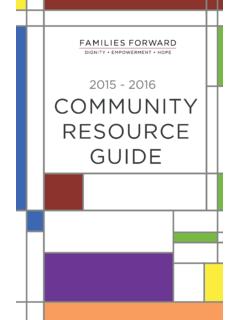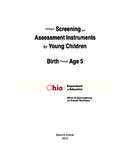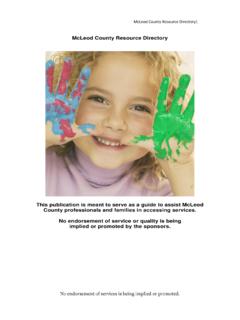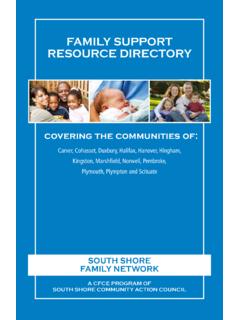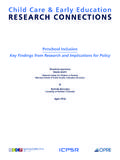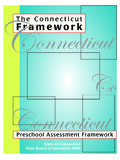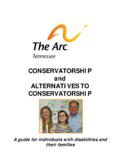Transcription of Montana Early Learning Standards - Early …
1 Montana Early Learning Standards2014 e Standards that guide the work of Early childhood professionals to en sure that children from bir th to a ge ve have the skills and knowledge they need to achieve success in Learning to reach their full potential in life Acknowledgments e 2014 Montana Early Learning Standards re ects the passionate, engaged, and e ective collaboration of Early childhood experts and leaders from across the state representing a variety of interests, knowledge, and experience in the care and education of young children. Facilitation of this e ort was conducted jointly by Cindy O'Dell and Libby Hancock. Major editing was completed by Sandra Morris. e Early Childhood Services Bu r eau o f t h e Mo n t an a Department of Public Health and Human Services provided funding. Special thanks to Audra Landis of the Montana Department of Administration, Print and Mail Ser vices for graphic desJHn and layout. e following representatives provided key expertise as members of the Early Learning Standards Task Force.
2 In addition to these state Early childhood leaders, other key stakeholders and content specialists provided feedback. ese contributions are incredibly valued and greatly Early Learning Standards Task ForceTerri BarclayMontana O ce of Public InstructionCollette BoxDiscover y Developm ent al CenterJu li e Bu lla r dUniversity of Montana WesternKr ist in Dah l-Hor ejsiLearning and Belonging PreschoolUniversity of Montana MissoulaRen ee Fun kNorthwest Montana Head StartJen n ifer Gi llia r dUniversity of Montana WesternLibby H an cockEarly Childhood ProjectMontana State University BozemanSu sa n H a r p er -W h a lenUniversity of Montana MissoulaChristy Hill LarsonEarly Childhood ProjectMontana State UniversityCathy JacksonHRDC Head Start BozemanSt evi Ja ck so nHRDC Head Start BozemanAnn KlaasEarly Childhood ProjectMontana State UniversitySandra MorrisChild Care plus+ Center forInclusion in Early ChildhoodUniversity of Montana MissoulaLisa Mu r p h yMontana Head Start Training and Technical AssistanceCindy O'DellSalish Kootenai CollegeKelly Rosen leafMissoula Child Care
3 Resource and ReferralMar y Jane Stan daer tMontana Head Start AssociationViola WoodFor t Belkn ap Head St ar tIn addition to the ELS Task Force, the following individuals provided key guidance and feedback:Merle FarrierSalish Kootenai CollegeLu c y H a r t - P a u lso nUniversity of Montana MissoulaJu st i n e Ja mIndian Education for AllMontana O ce of Public Instruction i Table of ContentsAcknow ledgm entsI ntroduction2014 Montana Early Learning StandardsEar ly Lear ning Pr inciplesAlignment across Early Childhood Settings .. 7 Assessment .. 7 Brain Development and Research .. 8 Child Development Expertise .. 8 Connections among Domains .. 8 Culture .. 9 Developmentally Appropriate Practice .. 9 Dual Language Learners .. 9 Emotional and Social Development .. 10 Ethics and Professionalism .. 10 Family Engagement .. 10 Health and Well-being .. 10 Inclusion .. 11 Indian Education for 11 Individuality .. 11 Lifelong Learning .. 12 Modeling.
4 12 Open-ended Materials and Open-ended Questions .. 12 Play .. 12 Policy-making .. 13 Primar y Caregiver .. 13 Quality .. 13 Relationships .. 13 Research and Best Practice .. 14 Responsive Routines .. 14 School Readiness .. 15 Screen Time .. 15 Use of Technology .. 15 Core Dom ain 1: Em otional and SocialCulture, Family, and CommunityStandard - Culture .. 19 Children develop an awareness of and appreciation for similarities and di erences between themselves a nd other - Family .. 20 Children develop a n awa reness of the functions, contr ibution s, and diver se characteristics of - Community .. 21 Children develop an understanding of the basic principles of how communities function, including work roles and ot ion al Developm en tStandard - Self-Concept .. 23 Children develop a n awa reness a nd a ppreciation of themselves a s uniqu e, compet en t , a n d ca pa ble in dividu a - Self-E cacy .. 24 Children demon strate a belief in their - Self-Regulation.
5 25 Children manage their internal states, feelings, and behavior and develop the a bilit y to a da pt t o diver se sit u a t ion s a n d envir onment - Emotional Expression .. 26 Children express a wide a nd va r ied ra nge of feelings through their fa cia l expressions, gestures, behaviors, and cial D evelop m en tStandard Interactions with Adults .. 27 Children show tr u st, develop emotiona l bonds, and intera ct comfor tably with Interactions with Peers .. 28 Children interact and build relationships with peers as they expand their world beyond the family and develop skills in cooperation, negotiation, and showing empathy. iiCore Dom ain 2: PhysicalPhysical DevelopmentStandard Fine Motor Skills .. 31 Children develop small muscle strength, coordination, and Gross Motor Skills .. 32 Children develop large muscle strength, coordination, and 33 Children u se a ll the sen ses to explore the environment a nd develop skills through sight, smell, touch, taste, and , Safety, and Personal CareStandard Daily Living Skills.
6 35 Children demon strate per sona l hea lth and hygiene skills a s they develop a nd practice self-care Nutrition .. 36 Children eat and enjoy a variety of nutritional foods and develop healthy eating Physical Fitness .. 37 Children demonstrate healthy behaviors that contribute to lifelong well-being through physical Safety Practices .. 38 Children develop an awareness and understanding of safety rules as they learn to make safe and appropr iate Domain 3: CommunicationCommunication and Language DevelopmentStandard Receptive Communication (Listening and Understanding) .. 41 Children use listening and observation skills to make sense of and respond to spoken language and other forms of communication. Children enter into the exchange of information around what they see, hear, and experience. ey begin to acquire an understanding of the concepts of language that contribute to further Expressive Communication (Speaking and Signing) .. 42 Children develop skills in using sounds, facial expressions, gestures, and words for a variety of purposes, such as to help adults and others understand their needs, a sk question s, express feelings a nd idea s, a nd solve Social Communication.
7 43 Children develop skills that help them interact and communicate with others in e ective English Language Learners: Dual Language Acquisition .. 44 Children develop competency in their home la ngu age while becoming pro cient in er acyStandard Early Reading and Book Appreciation .. 45 Childr en develop a n u n der st a n din g, skills, a n d int er est in t he symbols, sou n ds, and rhythms of written language as they also develop interest in reading, enjoyment from books, a nd awareness that the pr inted word ca n be u sed for var ious pur Print Development/Writing .. 46 Childr en demon st r a t e int er est a n d skills in u sin g symbols a s a mea n in gfu l for m of Print Concepts .. 47 Children develop an understanding that print carries a message through symbols a nd words and that there is a connection between sounds a nd letter s (the alphabetic principle).Standard Phonological Awareness .. 48 Children develop a n awa reness of the sounds of letter s and the combination s of letters that make up words and use this awareness to manipulate syllables and sounds of speech.
8 IiiCore Dom ain 4: CognitionApproaches to LearningStandard Curiosity .. 51 Children develop imagination, inventiveness, originality, and interest as they explore a nd exper ience new Initiative and Self-direction .. 52 Children develop an eagerness to engage in new tasks and to take risks in Learning new skills or Persistence and Attentiveness .. 53 Children develop the ability to focus their attention and concentrate to complete tasks and increase their Re ection and Inter pretation .. 54 Children develop skills in thinking about their Learning in order to inform fu t u re decision and Representational oughtStandard Reasoning and Representational ought .. 55 Children develop skills in causation, critical and analytical thinking, problem solving, and representational Ar tsStandard Creative Movement .. 57 Children produ ce rhythmic movements spontaneou sly and in imitation , with growing technical and artistic Drama .. 58 Children show a ppreciation a nd awa reness of drama through obser vation a nd imitation, and by participating in simple dramatic plots, assuming roles related to their life exper iences a s well a s their fa nta Music.
9 59 Children engage in a variety of musical or rhythmic activities with growing skills for a variety of purposes, including enjoyment, self-expression, and cr ea t ivit Visual Ar ts .. 60 Children demonstrate a growing understanding and appreciation for the creative process a s they u se the visua l a r ts to express per sona l interest s, idea s, and feelings, and share opinions about artwork and artistic and NumeracyStandard Number Sense and Operations .. 61 Children develop the ability to think and work with numbers, to understand their uses, and describe numerical relationships through structured and ever yday exper Measurement .. 62 Children develop skills in u sing mea surement in str uments to explore and discover measurement relationships and characteristics, such as length, quantity, volume, distance, weight, area, and Data Analysis .. 63 Children apply mathematical skills in data analysis, such as counting, sorting, and comparing Algebr aic inking.
10 64 Children lea r n to identify, descr ibe, produ ce, a nd create patter n s u sing mathematical language and Geometr y and Spatial Reasoning .. 65 Children build the foundation for recognizing and describing shapes by manipulating, playing with, tracing, and making common shapes. Children learn spatial reasoning and directional words as they become aware of their bodies and personal space within the physical ceStandard Scienti c inking and Use of the Scienti c Method .. 67As children seek to understand their environment and test new knowledge, they enga ge in scienti c investigations u sing their sen ses to obser ve, ma nipu late objects, a sk questions, make predictions, and develop conclu sions and gen er a liza t ion Life Science .. 68 Children develop understanding of and compassion for living Physical Science .. 69 Children develop an understanding of the physical world (the nature and proper ties of energy, nonliving matter a nd the forces that give order to the natural world).


